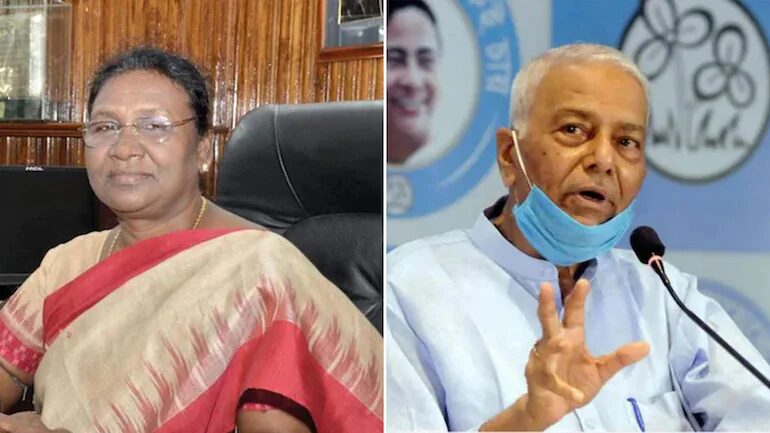With the BJP-led NDA selecting Droupadi Murmu as its candidate for the President’s post and the Opposition parties announcing former Finance Minister Yashwant Sinha’s name as their candidate, here’s a look at how the President of India is elected.
On July 18, elected MLAs and MPs from throughout India will vote for the 16th President of India. The term of President Ram Nath Kovind expires on July 25.
Election Commission of India is entrusted with the responsibility of conducting presidential elections (ECI). The President shall serve for a period of 5 years from the date of his inauguration.
Election Process
The President is chosen by an Electoral College comprised of members of both Houses of Parliament, state legislatures, Delhi, and Puducherry.
The Electoral College does not include members of Rajya Sabha, Lok Sabha, and the Assemblies, as well as members of state Legislative Councils.
According to the 1971 census, votes are weighted according to the population of each state.
The value of each representative’s vote is 5,434,000 divided by 776 and rounded to 700. The total number of electors for the Assemblies and the Parliament is 10,86 lakh.
Currently, Uttar Pradesh has the most value ascribed to their votes, with 208 MLAs, while Sikkim has the lowest, with seven.
How does the Candidate win?
A nominated candidate does not win based on a simple majority, but rather by collecting a certain number of votes.
During the counting process, the panel tallies all legitimate votes cast by the Electoral College on paper ballots; to win, a candidate must get 50 percent plus one of the total votes cast.
In contrast to general elections, where electors vote for a single party’s candidate, Electoral College voters rank candidates in order of preference on the ballot.
Members of the Rajya Sabha, the Lok Sabha, or the Legislative Assemblies of the states who have been nominated are ineligible for inclusion in the Electoral College and consequently cannot participate in the election. Also, Legislative Council members are not eligible to vote in the Presidential election.
Nomination Process
The nomination of a candidate for the office of the President needs to be consented to by at least 50 electors as proposers and 50 electors as seconders.
This rule of getting electors to propose and second a person’s candidature was adopted in 1974 after the Election Commission realised that in 1952, 1957, 1962, 1967 and 1969 polls, several candidates submitted their names even though they did not have even a remote chance of getting elected.
How does the Voting take place?
To vote in the Parliament, all elected MPs will be issued green ballot sheets and pink ballot papers, respectively. In addition, they will get unique pens, which are the only means of recording their votes.
Each vote will include the names of all candidates vying for the presidency. The electors will next declare their preference for each candidate by marking “1” for the candidate they favour the most for president, “2” for their second choice, and so on.
A voter is not obligated to rank all presidential contenders. For his/her vote to be considered in the election, he/she must simply indicate their first choice.
Counting of Votes
The ballot papers are collected by state and distributed to each candidate’s tray based on whose name comes first on the ballot. The ballots of the Members of Parliament are then allocated in a similar manner.
The total number of votes a presidential contender obtains is determined by adding the value of each ballot on which he or she received a first-place ranking.













